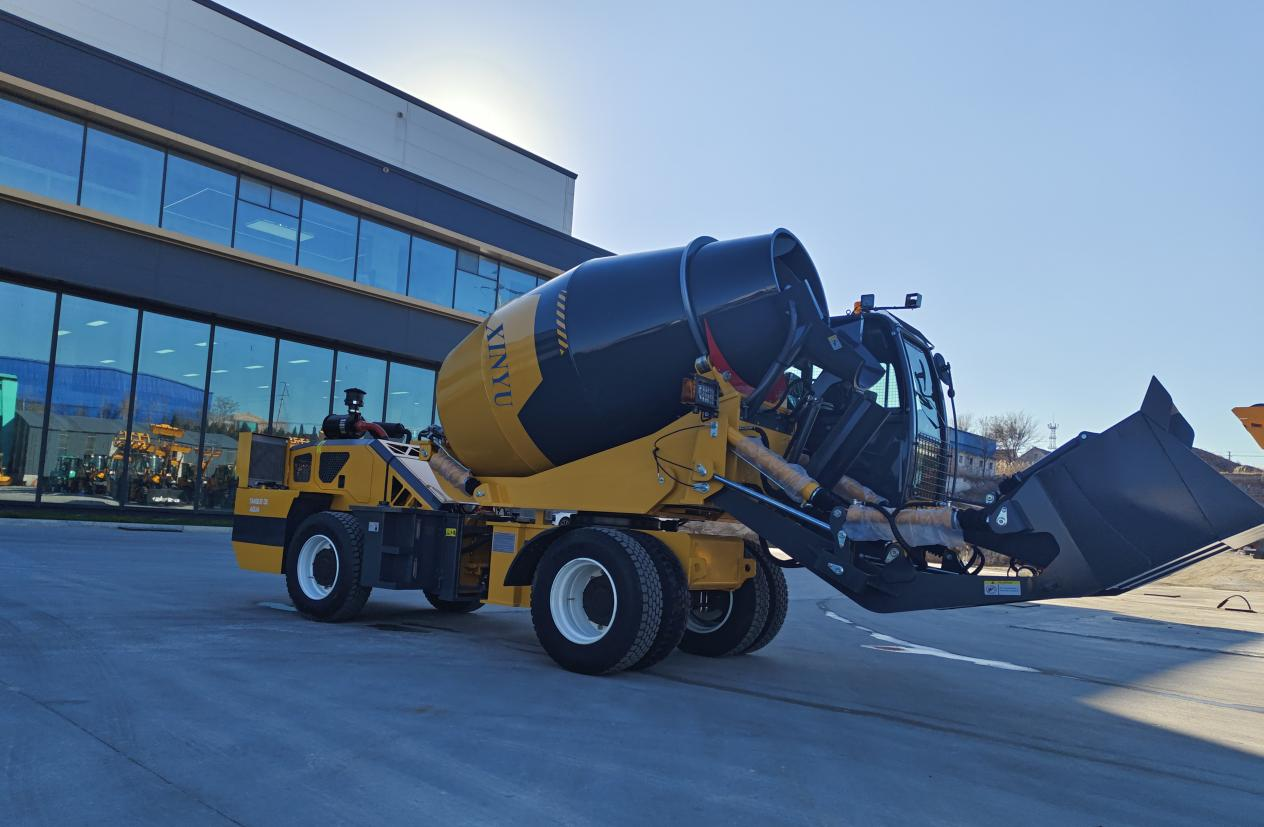What is a Self-Loading Concrete Mixer Truck?

What is a Self-Loading Concrete Mixer Truck?
In the construction machinery sector, self-loading concrete mixer trucks have emerged as a transformative innovation. These vehicles revolutionize concrete production by integrating high automation, labor-saving capabilities, and efficiency improvements. Industry professionals highlight them as mobile concrete mixing equipment with significant growth potential, reshaping workflows for construction projects worldwide.
Core Advantages of Self-Loading Concrete Mixer Trucks
High Automation
Self-loading mixer trucks combine loading, mixing, unloading, and transportation into a single system. They can automatically load aggregates like sand and gravel, precisely batch materials via cab controls or remote operation, and deliver fresh concrete directly to the worksite. This reduces manual intervention—for example, automated batching systems ensure consistent mix ratios without constant human oversight, boosting production efficiency by up to 40% compared to traditional methods.
Labor Efficiency
Traditional concrete production requires multiple workers for tasks like material loading, mixing, and transport. Self-loading trucks, however, only need 1–2 operators to manage the entire process. This cuts labor costs significantly, as fewer staff are needed to oversee each stage from start to finish.
Rapid Production Capacity
These trucks enable high-speed concrete output. Industry data shows some models can produce 20 cubic meters per hour, totaling around 500 tons daily. On-site mixing eliminates delays from transporting pre-mixed concrete, ensuring materials are fresh and ready for immediate use.
Cost Reduction
Beyond labor savings, self-loading trucks optimize material usage through precise batching, minimizing waste. They also eliminate the need for fixed mixing plants, reducing infrastructure and transportation costs. For projects with changing site locations, this mobility translates to direct savings in setup and relocation expenses.
Adaptability to Diverse Terrains
Equipped with four-wheel drive chassis, these trucks navigate rough, muddy, or uneven terrain with ease. Whether working on mountain roads, rural sites, or urban construction zones with limited access, their stability allows operation in challenging environments.
Flexible Operation Modes
Operators can control the truck from the cab or use remote controls for precision—ideal for tight spaces or when direct cab access is difficult. This versatility suits various work scenarios, from open-site mixing to confined-area unloading.
Mobility and Versatility
Unlike fixed mixing plants, self-loading trucks move freely between job sites. This allows contractors to deploy the same equipment across multiple projects, saving time and costs on dismantling and rebuilding infrastructure. It’s particularly useful for projects with short timelines or frequent location changes.
Conclusion
Self-loading concrete mixer trucks redefine efficiency in construction by merging automation, mobility, and cost-effectiveness. Their ability to streamline production—from material loading to on-site delivery—reduces reliance on manual labor and enhances project timelines. As the industry prioritizes innovation, these trucks are becoming essential for projects seeking to balance productivity, quality, and economic viability.
- Information Technology
- Office Equipment and Supplies
- Cars and Trucks
- Persons
- Books and Authors
- Tutorials
- Art
- Causes
- Crafts
- Dance
- Drinks
- Film
- Fitness
- Food
- Spellen
- Gardening
- Health
- Home
- Literature
- Music
- Networking
- Other
- Party
- Religion
- Shopping
- Sports
- Theater
- Wellness



